Beijing Ancient Observatory

Beez Neez now Chy Whella
Big Bear and Pepe Millard
Fri 11 May 2018 22:57
|
Beijing Ancient
Observatory
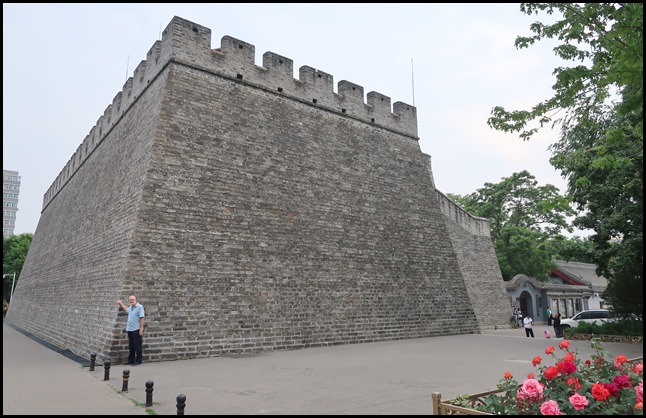 The real treat of the day was finding
the Beijing Ancient Observatory. We happened to see it on the map near the hotel
when we researched the area we were staying in. High above Bear on the roof of
the tower-shape structure are some of the oldest
instruments used by the ancient astronomers, seen from quite a way along the
main road.
 The little window beyond the tiny
arch proved to be the Ticket Office. Bear showed his Passport to get free entry
for being a Silver Surfer and paid two pounds thirty three for me. All we know
for sure – no expectation of learning any Chinese, we keep struggling with
‘thank you’ or Xiexie........
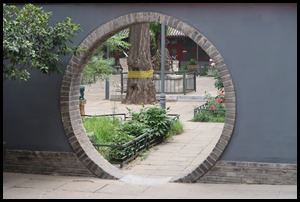 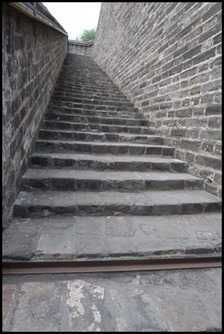 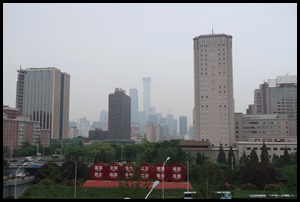 Through to the courtyard and a small moon gate to our right that would take us to some
exhibition rooms. But first, up the first of two sets of
similar steps to the roof. To our left a guard in a shed and a view toward Beijing CBD, hazy the further we
focussed.
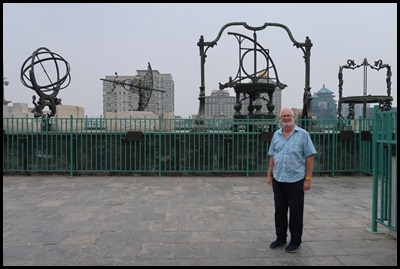 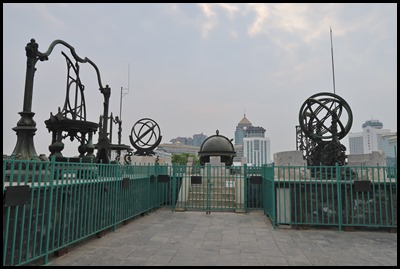 Ahead and to our right, the stunning and very old equipment of the astronomers, pity we
couldn’t get up close and personal...
Our little pamphlet says: In 1421
(19th year of Yong Le), the Ming Dynasty moved its capital to Beijing. The
Observatory was built along the city wall and equipped with an armillary sphere
(skeletons globes made up of rings to plot the position of stars and planets),
an Abridged Armilla and a Celestial Globe (conceptualises the heavens as a
sphere and has the major stars marked on it). The Forbidden City was also built
at that time. The “Gui Ying Tang” with gnomon and clepsydra (water clock) were
built four years later. This is how the buildings and equipment of the Beijing
Ancient Observatory were established in their entirety.
Beijing Ancient Observatory is
one of the oldest astronomical observatories in the world. It was built in 1422
(it gained a year from the first paragraph.....) during the Ming
Dynasty (1368-1644) and during that time was the national observatory, in use
for nearly five hundred years until 1929. It is well-known throughout the world,
and the pieces of astronomical equipment are recognized for their magnificence,
beautiful craftsmanship and for being so well-preserved.
After the Qing Dynasty moved its
capital to Beijing in 1644. Following Johann Adam Schall von Bell’s advice, the
Chinese began to use the western computation standard and measuring system.
During 1669-1674, following the orders of Emperor Kang Xi, Ferdinand Verbiest
designed six new astronomical instruments. Later, in 1715, Killian Stumpf
designed another instrument---the Azimuth Theodolite. In 1744, Emperor Qian Long
ordered the construction of another instrument--- the New Armilla. This is how
all the astronomical instruments in the Observatory came into
being.
  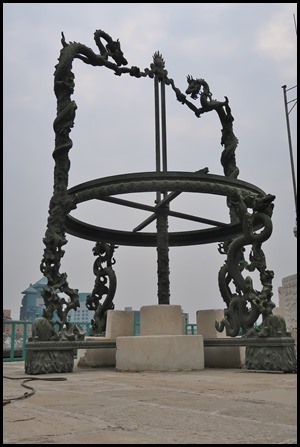 Equatorial
Armilla, made in 1673 for the purpose of determining true solar time as
well as the right ascension difference and declination of celestial bodies.
Sextant, made in 1673 for the purpose of measuring
the angular distance between any two stars less than sixty degrees apart as well
as the angular diameters of the sun and the moon. Altazimuth, made in 1673 for the purpose of determining the
azimuth of celestial bodies.
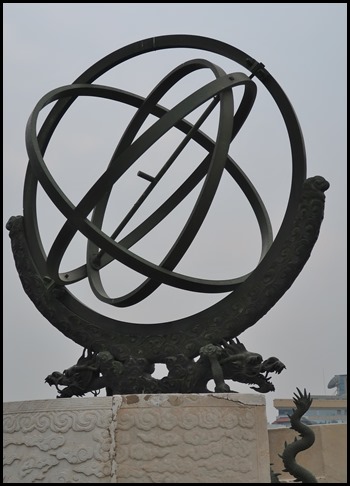 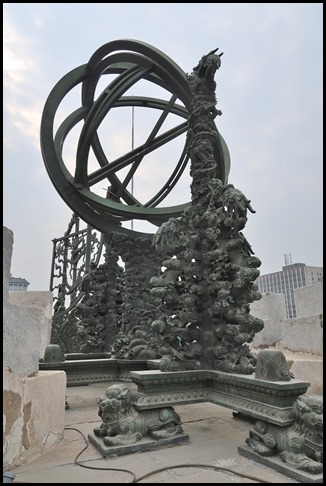 Ecliptic
Armilla, made in 1673 for the purpose of determining ecliptic longitude
difference and latitude of celestial bodies as well as the 24 Solar Terms. New Armilla, made in 1744 for the purpose of determining
true solar time as well as the right ascension difference and declination of
celestial bodies.
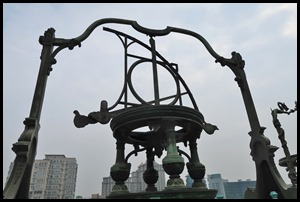 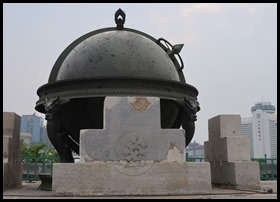 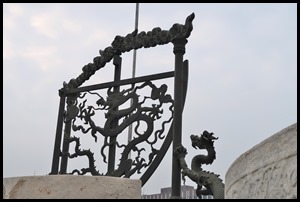 Azimuth
Theodolite, made in 1715 for the purpose of determining azimuth and
altitude of celestial bodies. Celestial Globe, made
in 1673 for the purpose of determining the rising and setting time and azimuth
of celestial bodies as well as their altitude and azimuth at any other time.
The Quadrant, made in 1673 for the purpose of
determining altitudes or zenith distances of celestial bodies.
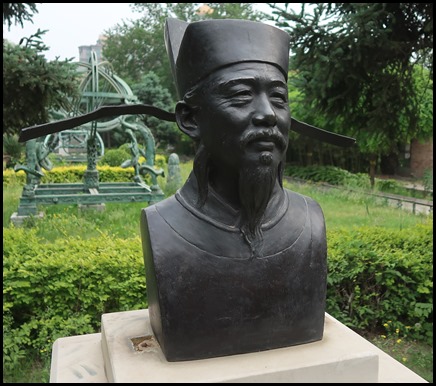  Back down in the back garden we met a
couple of chaps, loved the head gear of the first. Shen
Kuo (1031 – 1095 AD). A prominent scientist and astronomer of the Song
Dynasty, Shen Kuo was the head official of the Bureau of Astronomy in the Song
court, where he improved the designs of several local astronomical instruments,
including the armillary sphere, the gnomon and the clepsydra clock. He also
formulated a solar calendar named the Twelve Solar Terms Calendar,
which was used in agriculture. His works are summed up in his “Dream
Pool Essays” one of the greatest books of that time.
Guo Shoujing (1231 – 1316 AD).
Guo Shoujing was a scientist and astronomer during the Yuan Dynasty. He worked
on establishing several astronomical observatories and also devised a number of
astronomical instruments, including an adapted version of the armillary, an
improved version of the gnomon and the Hemisphere Sundial. He also formulated
the Shoushi Calendar – which calculated the year to be 365.2425 days.
This calendar was the calendar used for the longest period in Chinese
history.
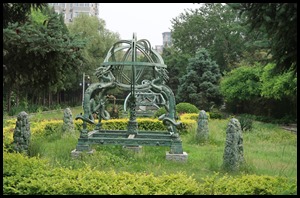 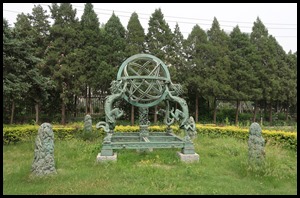  Behind the boys in the big garden were
some of their ‘tools of the trade’.
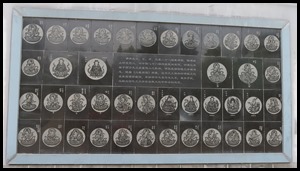 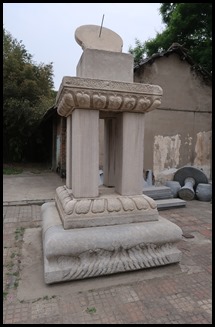 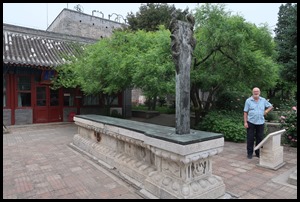 The courtyard was equally interesting.
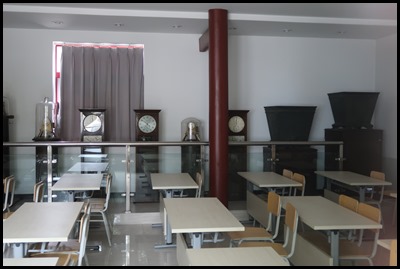 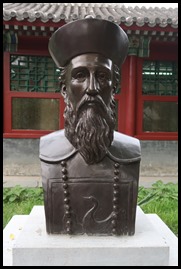 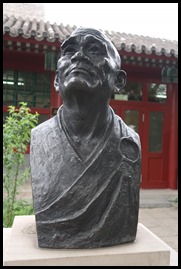 Sadly, the timepieces were in a locked classroom but we met many more
brainiacs of the astronomical variety.
 In the little museum we saw a picture of the Observatory taken in 1929, nice to see how
Beijing looked then.
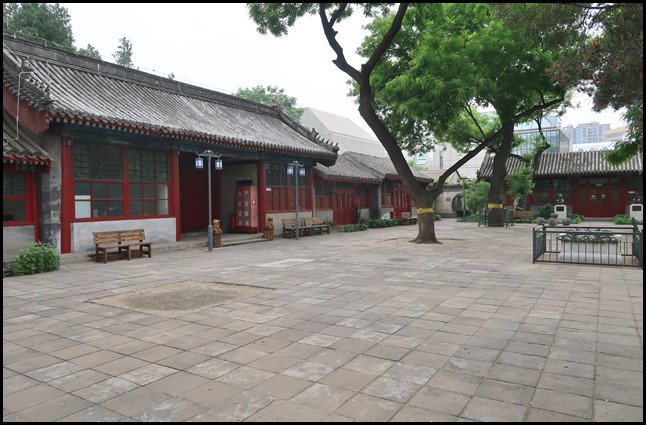 Through a little moon gate and a
courtyard filled with Heritage Trees and surrounded
by lots of little museums.
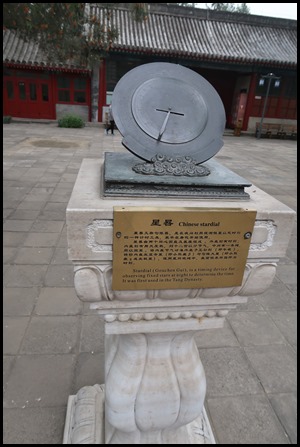 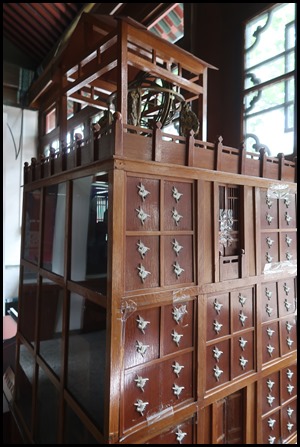   We spent a couple of hours bimbling around measuring equipment, water measures and
stuff.
 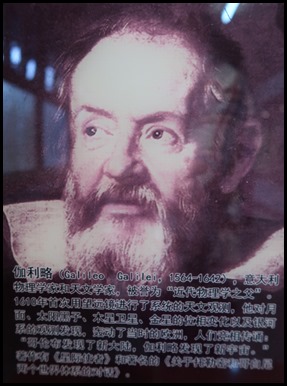 It was lovely to see Sir Isaac Newton, along with Galileo
up with all the local boys...........
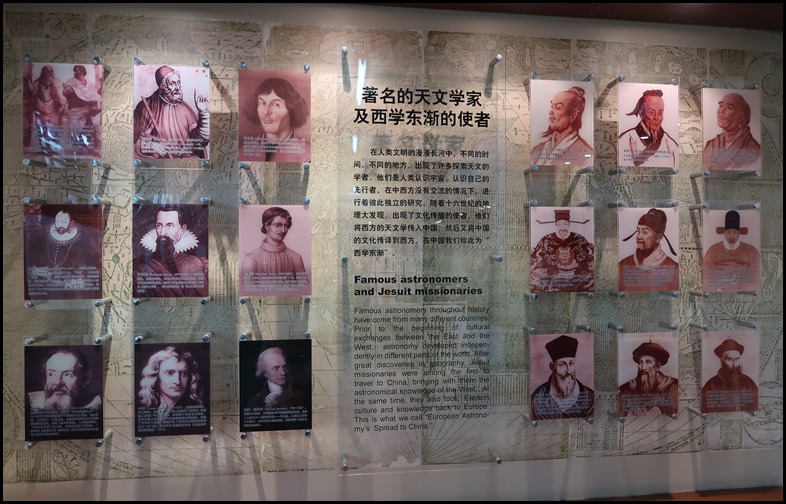 .............on the ‘wall of fame’.
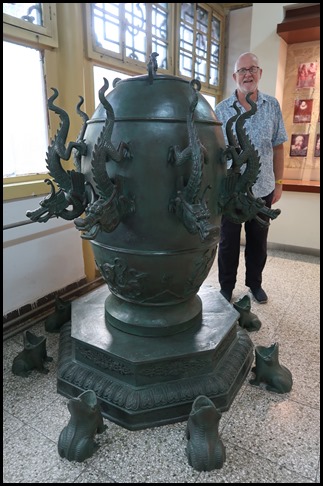 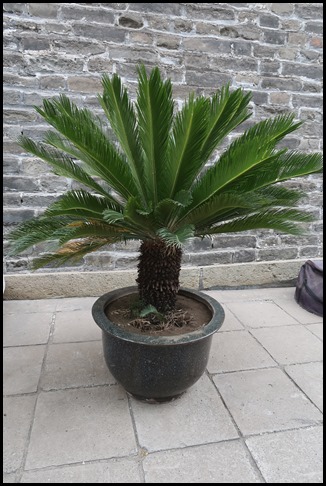 An interesting
‘thing’, a potted plant and off we went, a
smashing find.
ALL IN ALL A REAL
TREASURE
FASCINATING GENIUS OF THE EARLY CHINESE
ASTRONOMERS |